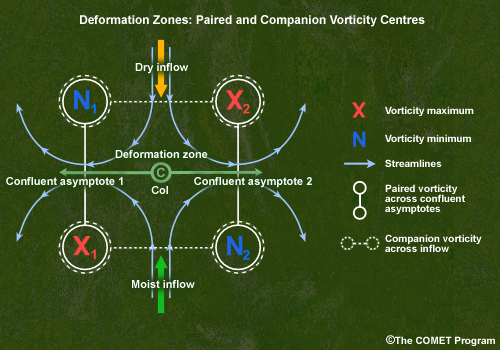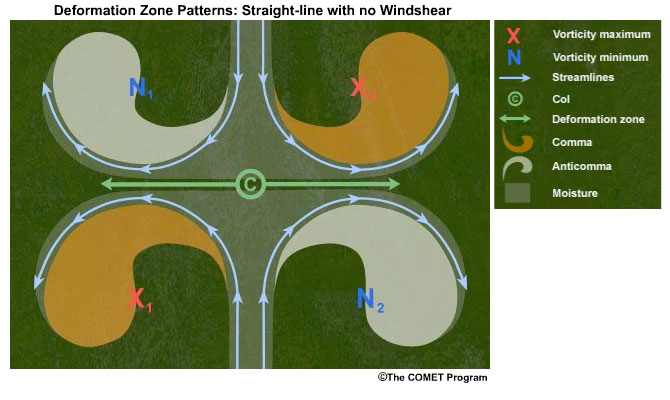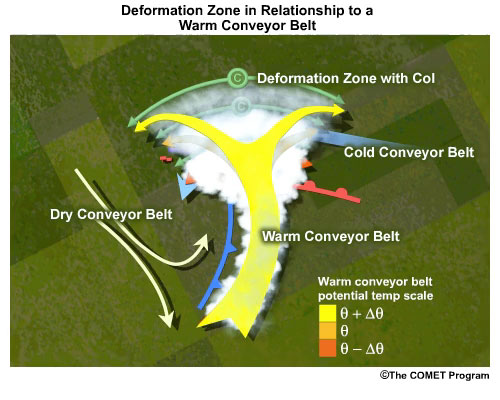Pre-Lab: Identifying Deformation Zones
A deformation zone is a region in the atmosphere with significant stretching or shearing. Spatial variations in the velocity field between two air masses cause a change in the shape of these air masses. Analysis of deformation zones is important in many situations since deformation is a primary factor in the processes of frontogenesis and frontolysis.
The dynamic features that best define a deformation zone on satellite are the associated vorticity maxima and minima that were discussed earlier. As shown below, a vorticity maximum and a vorticity minimum both straddle the inflow along the diffluent asymptotes, or axes of contraction, of a deformation zone. The incoming flow is then stretched out to both sides and forms the axis of dilatation, which is a confluent asymptote.
The relative strengths of X1, N1, X2 and N2 define the size, shape and movement of the deformation zone.

As illustrated in this conceptual view of a warm conveyor belt below, synoptic scale, quasi-horizontal motions are orders of magnitude larger than vertical motions in the atmosphere. This is the simple justification for drawing deformation zones on surfaces like isobaric charts while referring to the more detailed water vapor imagery to complete the visualization of current weather. This process can help students and forecasters develop a mental model of the atmosphere.
You will have a chance to combine knowledge in this way via analyzing temperature advection on pressure levels, deformation and vorticity on satellite water vapor loops, and surface streamlines for the same case during labs. For now, we’ll look at identifying common patterns of deformation before performing a larger scale deformation and vorticity analysis.

